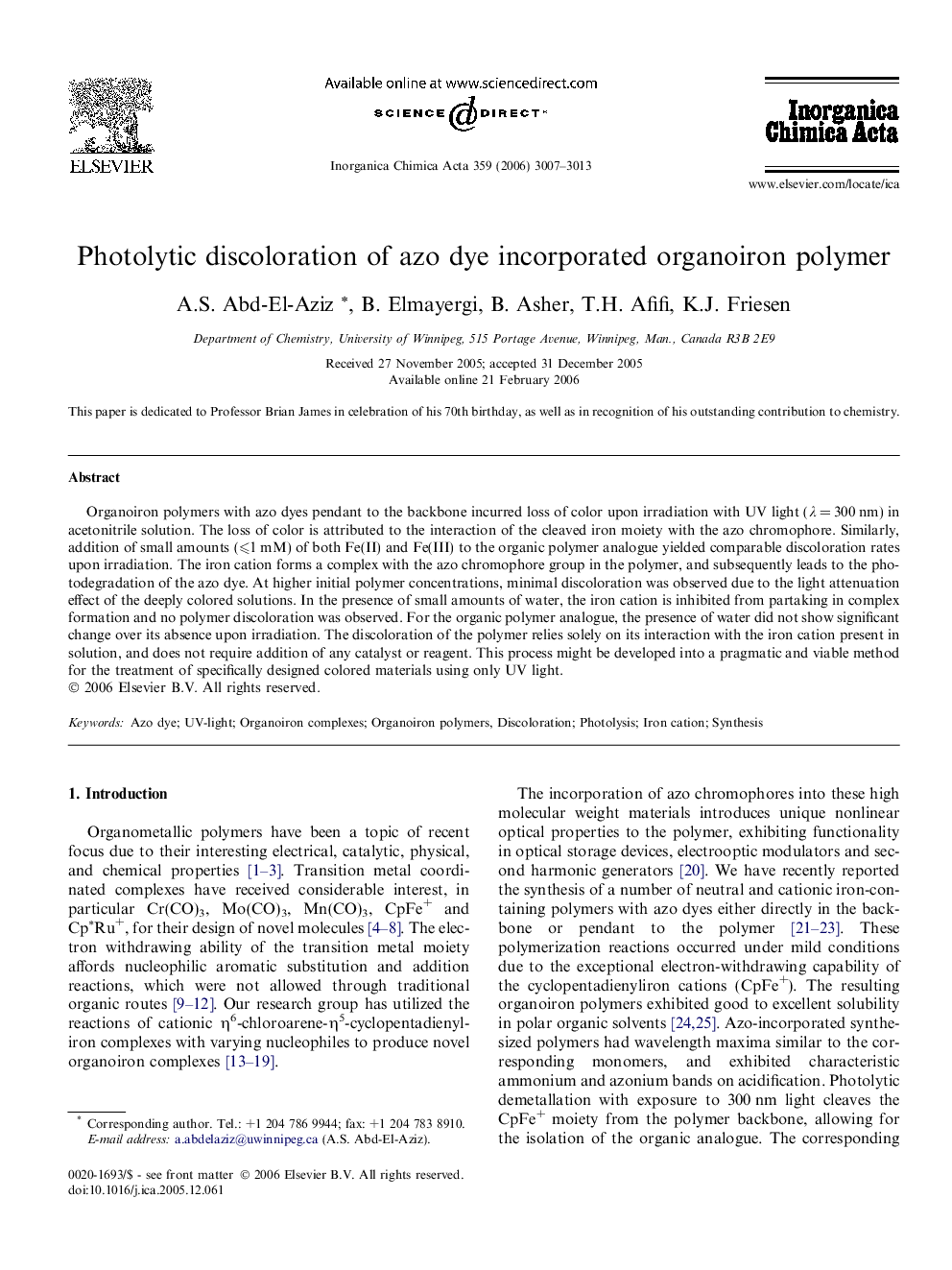| Article ID | Journal | Published Year | Pages | File Type |
|---|---|---|---|---|
| 1313043 | Inorganica Chimica Acta | 2006 | 7 Pages |
Organoiron polymers with azo dyes pendant to the backbone incurred loss of color upon irradiation with UV light (λ = 300 nm) in acetonitrile solution. The loss of color is attributed to the interaction of the cleaved iron moiety with the azo chromophore. Similarly, addition of small amounts (⩽1 mM) of both Fe(II) and Fe(III) to the organic polymer analogue yielded comparable discoloration rates upon irradiation. The iron cation forms a complex with the azo chromophore group in the polymer, and subsequently leads to the photodegradation of the azo dye. At higher initial polymer concentrations, minimal discoloration was observed due to the light attenuation effect of the deeply colored solutions. In the presence of small amounts of water, the iron cation is inhibited from partaking in complex formation and no polymer discoloration was observed. For the organic polymer analogue, the presence of water did not show significant change over its absence upon irradiation. The discoloration of the polymer relies solely on its interaction with the iron cation present in solution, and does not require addition of any catalyst or reagent. This process might be developed into a pragmatic and viable method for the treatment of specifically designed colored materials using only UV light.
Graphical abstractColored organoiron polymers with azo dyes pendant to the backbone incurred loss of color upon irradiation with UV light in acetonitrile solution. The loss of color is attributed to the interaction of the cleaved iron moiety with the azo chromophore.Figure optionsDownload full-size imageDownload as PowerPoint slide
